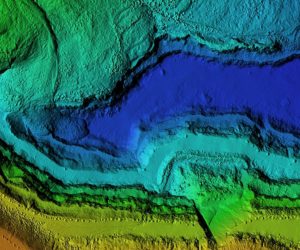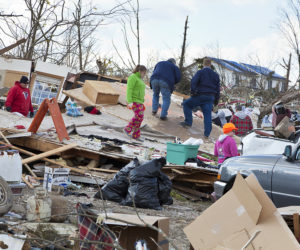
Sorry, your browser is not compatible with this application. Please use the latest version of Google Chrome, Mozilla Firefox, Microsoft Edge or Safari.
Emergency Management content

Understanding Disasters Through Federal Data
This paper examines how federal data can be used to better understand the people and communities affected by Hurricane Helene. By combining datasets from the U.S. Census Bureau, FEMA, NOAA,…
Learn More


Drought, Deluge, and Data
Communities around the world are being pushed to rethink how they prepare for floods, droughts, and other extreme climate events. This report highlights real-world examples—from Texas to Jakarta—where governments and…
Learn More


Disaster Assistance High-Risk Series
The GAO highlights growing concerns over federal workforce readiness in the face of increasingly frequent and severe disasters. Hurricanes Helene and Milton, along with the 2025 Los Angeles wildfires, required…
Learn More


Tornadoes
Tornadoes remain one of the deadliest and most costly natural disasters in the U.S., with over 2,100 recorded in 2024 alone—the highest on record. FEMA has invested billions in assistance…
Learn More


Fraud Risk in Federal Programs
In an era where ransomware attacks can disrupt city services and endanger public safety, preparedness is critical. This GAO report assesses how selected U.S. cities are planning for and responding…
Learn More


The U.S. Geological Survey National Streamgage...
In 2024, the U.S. Geological Survey operated over 12,000 streamgages to monitor surface water conditions across the country. These instruments collect river height and streamflow data—most of it updated in…
Learn More


Augmented Reality/Virtual Reality (AR/VR) Notional...
Fire departments across major U.S. cities are laying the groundwork for immersive training by outlining detailed requirements for augmented and virtual reality systems. This DHS-backed effort provides a comprehensive, non-proprietary…
Learn More


Wind-Driven Fire Spread to a Structure from...
This NIST study reveals how composite fences can rapidly channel flames toward nearby structures during wind-driven wildland-urban interface (WUI) fires. Through full-scale outdoor experiments, researchers observed how fence design, material…
Learn More


The New Space Tech Stack
The future of space operations is being reshaped by AI, edge computing, and immersive tech. Government agencies are leveraging these tools to extract insights from satellite imagery, streamline disaster response,…
Learn More


Disaster Assistance: Updated FEMA Guidance Could...
FEMA revised how it evaluates disaster assistance requests, aiming to better support communities—especially smaller or more vulnerable ones. However, its guidance still relies on outdated data, making it harder for…
Learn More


Finding Efficiency with Geospatial Technology
Geospatial technology, supercharged by AI, is revolutionizing how governments operate—from improving disaster response to optimizing infrastructure and identifying untapped revenue sources. By layering AI on top of location data, agencies…
Learn More


WUI Fire Evacuation and Sheltering Considerations:...
This updated NIST report introduces a structured methodology to help wildland-urban interface (WUI) communities assess, plan, and execute fire evacuations when time is critically limited. Drawing on lessons from the…
Learn More


BlackBerry AtHoc: Redefining Secure Crisis...
BlackBerry® AtHoc® achieves FedRAMP High authorization, reinforcing its ability to deliver secure, encrypted communication during critical events like cyberattacks and natural disasters. With 421 stringent security controls, it ensures operational…
Learn More


Executive Order 14239: Achieving Efficiency...
This Executive Order centers on empowering state and local governments to lead the charge in national preparedness. It calls for a shift from broad, generalized emergency policies to more focused,…
Learn More


Disaster Assistance: Improving the Federal Approach
Disasters are becoming deadlier, more frequent, and costlier—and the federal approach to helping communities recover is straining under the pressure. With over 600 open disaster declarations and billions in aid…
Learn More


